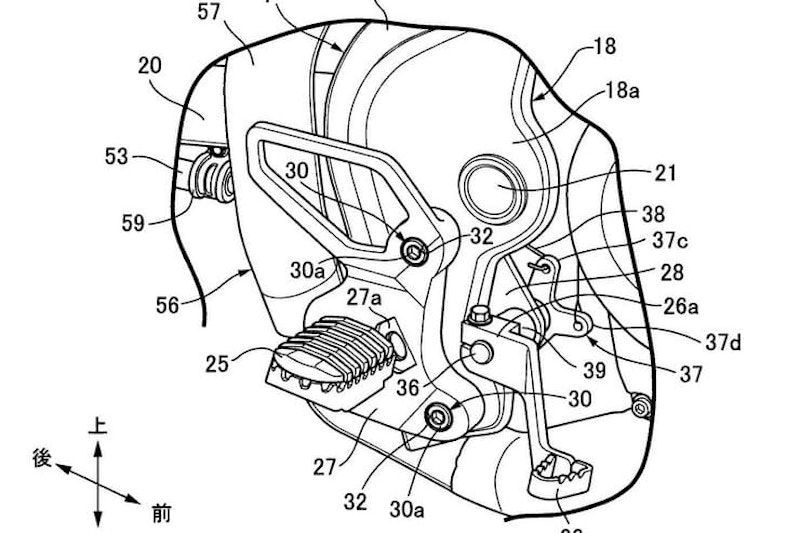Honda’s retro street scrambler plans
By Ben Purvis
Motorcycle Journalist
12.11.2019
Newly-published Japanese patent applications reveal that Honda is developing a new street scrambler based around the 471cc parallel twin engine and cruiser-style chassis of its Rebel 500.
The plans suggest that the firm is looking to grab a slice of the 70s-inspired scrambler market that’s already being exploited by the likes of Ducati’s Scrambler range and Yamaha’s SCR900, XSR900 and XSR700. But by basing its machine on existing components from the popular Rebel cruiser, Honda’s offering is going to be both smaller and cheaper than the main players in the Polaroid-tinged, Instagram-focussed ‘lifestyle’ scrambler market.
Don’t pay too much attention to the dotted outline of the bike shown in the new Honda patent (top image). That might give a rough idea of its shape but it’s not a key part of the document. Instead look at the section below the solid, dark line.
It clearly shows Honda’s long-running 471cc twin – as used in the CB500 range and the Rebel 500 – and a chassis that’s nearly identical to the Rebel’s frame. The only difference in the main chassis section is the subframe’s seat support (17), which extends horizontally from the main frame rail where the Rebel’s equivalent is angled downwards to accommodate the cruiser’s low seat.
The main focus of the patent is the rider’s foot peg area (above) and in particular tackles how to mount the rear brake master cylinder and reservoir. It’s needed because the Rebel that this bike is based on has a very different foot peg, mounted further forward on a separate bracket that also holds the master cylinder.
For the scrambler the peg is moved rearward, bolting to the frame via a new aluminium mounting plate with the master cylinder repositioned to a new spot behind the swingarm pivot area. The footrest itself is quite suitable for a scrambler, with a grippy, saw-toothed main section under a removable rubber insert, but in fact the same peg is already used on the Rebel cruiser.
By basing its new scrambler on the Rebel 500 (above), Honda also opens the possibility of using the same components to make a smaller, single-cylinder, 286cc version around the smaller Rebel 300’s chassis and engine. The two Rebel models are designed to share a huge number of components and that means the scrambler-style pegs seen here would bolt straight to the Rebel 300.
Pegs aside, the patent also shows a distinctive new exhaust system, with a bash plate fitted around the catalytic converter under the engine and a pipe that then rises sharply before turning 90-degrees into a horizontal, mid-level end can. That’s a style that we’ve seen before – most recently on Honda’s 2015 Bulldog concept bike (below). Like the new design, the Bulldog was based around the CB500’s 471cc twin, but it also used the CB500’s chassis rather than the Rebel’s twin-shock tubular frame. Its style wasn’t so much retro scrambler as utilitarian mud-plugger, with relatively small wheels and wide, knobbly tyres along with beefy crash bars and luggage racks.
Earlier this year, Honda made a tentative move into the retro scrambler space by launching the CBF190TR into the Chinese market. That 184cc, air-cooled single isn’t destined to reach these shores, but Honda has also hinted at larger, European-oriented scrambler models, notably with 2015’s CBSix50 concept bike. Using the Rebel 500 as a base might prove to be a clever move, creating a bike that encapsulates the scrambler zeitgeist but with minimal R&D costs and no need for expensive re-homologation. With the Rebel already providing a temptingly affordable access point to the cruiser market it could easily undercut other firms’ larger scrambler models in terms of price.
Share on social media:

